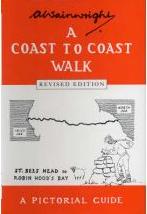History of the Coast to Coast Walk
Stretching for over 190 miles from St. Bees on the Irish Sea coast to Robin Hood’s Bay on the coast of the North Sea, Wainwright's Coast to Coast walk takes in three National Parks and encompasses fantastic scenery from Lakeland mountains to bleak moorland with wooded walks, to riverside paths and cliff top promenades. What more is required to have a fantastic adventure.


The Coast to Coast route was devised by Alfred Wainwright during the 1970s. It is now, and quite rightly so, one of the most popular long distance walks in the British isles. The route follows existing footpaths and bridleways throughout the vast majority of its distance with only a short amount of road walking. It has distinct starting and finishing points as it starts on the west coast of Northern England and finishes on the east coast of Northern England. Secondly, the walk makes its way through three of the finest national parks in the country, the Lake District, the Yorkshire Dales and the North York Moors. All three parks are distinctly different. The Lake District is rocky with the highest hills and largest lakes in England. The Yorkshire Dales are covered in a mixture of limestone and gritstone with challenging hills of its own albeit not on the scale of the Lake District. The North York Moors are predominantly heather moorland with rolling hills with dales of lush greenery.
The Coast to Coast Walk is not an official promoted route: it exists only as a published route description taking advantage of existing paths and access land. It is generally not waymarked in its own right and can only be followed in its entirety with the aid of a guidebook and map. It is not officially recognised by the local authorities responsible for footpaths, although countryside, walking and tourism professionals are aware of its existance and take measures to manage land erosion.